Charles Reynolds & Co

Panorama, spread over 5 pages. It shows, from the left, St Leonards Arch, warrior Square, Grand Hotel, the Pier, the Hospital, Rock’s factory Chimney that was used, via a tunnel under the road, for the boilers that heated the water for the White Rock Baths
What is a Leporello View?
Books of steel line-engraved vignettes had disappeared by about 1880, to be replaced by Leporello View Albums, but what was a Leporello album? and the answer is a strange and obscure one; those familiar with opera may recall that Mozart’s Don Giovanni had a servant called Leporello, and early in the first act, Leporello sings his catalogue aria and takes from his bag a book from which he pulls a long folding paper strip – the list of Don Giovanni’s romantic conquests. Leporello turns out to be a German word, probably from Italian, meaning ‘a fan of folded paper’. (It is not clear whether Mozart named the character after the word or vice-versa). So it’s the style of publication and not the printing technique that is being highlighted although it did lend itself to lithography and the concertina style lends itself to the printing of panoramic pictures.
Photography was emerging during the 1840’s and increased in popularity as the century progressed.As early as 1865 Francis Frith had illustrated his “Gossiping Photographer at Hastings” with photographic prints but that was the exception rather than the rule because photography did not lend itself to mass production until the 1890’s so publishers developed a method of glazing (putting a shine) on lithographs to simulate photographs and print the result in Laporello format. By the end of the 19th century the quality of the images, now derived from photographs, had improved considerably and books of views reverted to a conventional layout.
To produce these volumes on a national scale without any text meant that no great research was required and such guides or souvenirs could be produced in huge numbers for the mass market tailored to wspecific locations – The examples here are from Charles Reynolds &Co of 26 & 27 Milk Street, London EC and the extent of their range is advertised on the rear inside cover.
These pictures are from one of the smaller offerings, 8” x 5 ½” “The Album of Hastings and St Leonards Views” and a little sticker tells us that it was sold by ‘Apel’s Central Library, 55 Robertson Street Hastings” –this same firm went on to produce their own ‘Apel’s 1d (one old penny) View Book’, postcard-sized with 20 views that will be reviewed later. The technical details are that the concertina was 88inches (224cm) long and 8inches (20cm) high made of 4 pieces of paper pasted together, there was nothing printed on the back. There were other, similar productions, often with unnamed printers, published by local stationers in a variety of sizes.
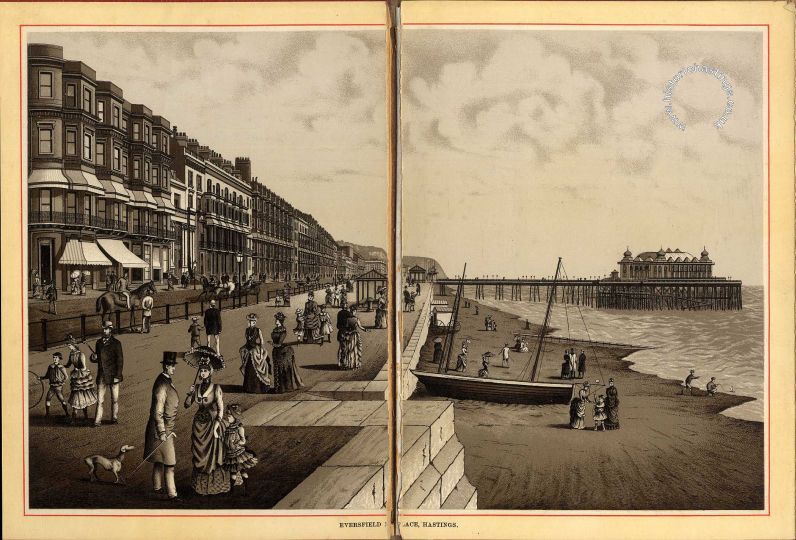
Eversfield Place – the concertinas were prone to split on the fold where they were joined onto the front cover. The view shows the slipway at the eastern end of Warrior Square. This area is now the western end of Bottle Alley.

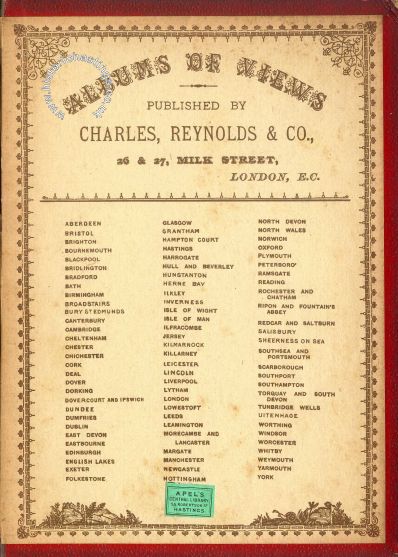
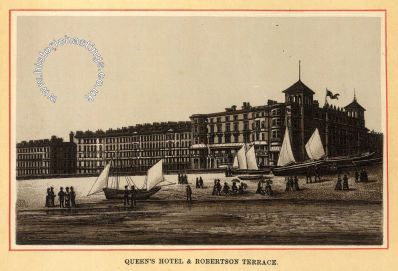
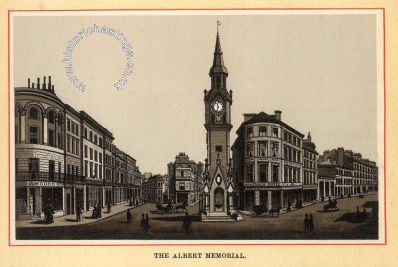
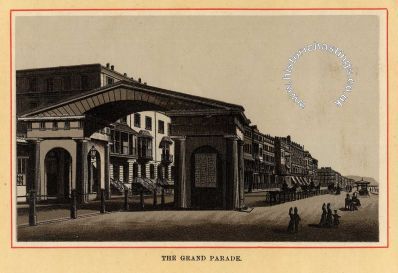
Above left
Queens Hotel & Robertson Terrace – very similar today except that Sidney Little’s promenade would now cover the foreground.
Above
The Albert Memorial – apart from the obvious loss of the Clock Tower the area still looks the same.
Left
The Grand Parade – Hastings Corporation demolished Burton’s fine arch on the night of 23rd January 1895. The reason was claimed to be that it obstructed the road. The site is marked with a red granite obelisk on the seafront.